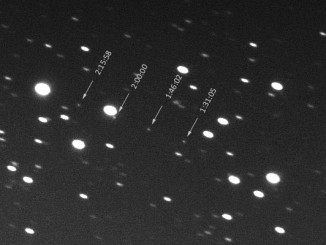The lander project manager Stephan Ulamec says tremendous science has been collected during Philae’s short time on the surface but battery life is now limited and it is unlikely to last much longer.
Related Articles

Astronomers recall discovery of Phaethon — source of Geminid meteors
The beautiful Geminid meteor shower is due to light up the heavens this weekend, but the source of the enigmatic cosmic display had eluded stargazers for more than 120 years. Then, in 1983, two University of Leicester astronomers — Dr. Simon Green and Dr. John Davies — used data from the IRAS satellite to discover 3200 Phaethon, an asteroid with a very unusual orbit.

See Comet Iwamoto’s dash through Leo, Cancer and Gemini before full Moon
Grab your binoculars to catch a glimpse of speedy Comet C/2018 Y1 Iwamoto over the coming week before the glare from a full Moon on 19 February drowns it out. Potentially attaining magnitude +6, the comet passes closest to Earth on 12 February when it can be found traversing Leo at a rate of 7.2 degrees/day. Don’t miss C/2018 Y1’s close enounter with galaxy NGC 2903 on 13 February – by eye, camera, or live online.

